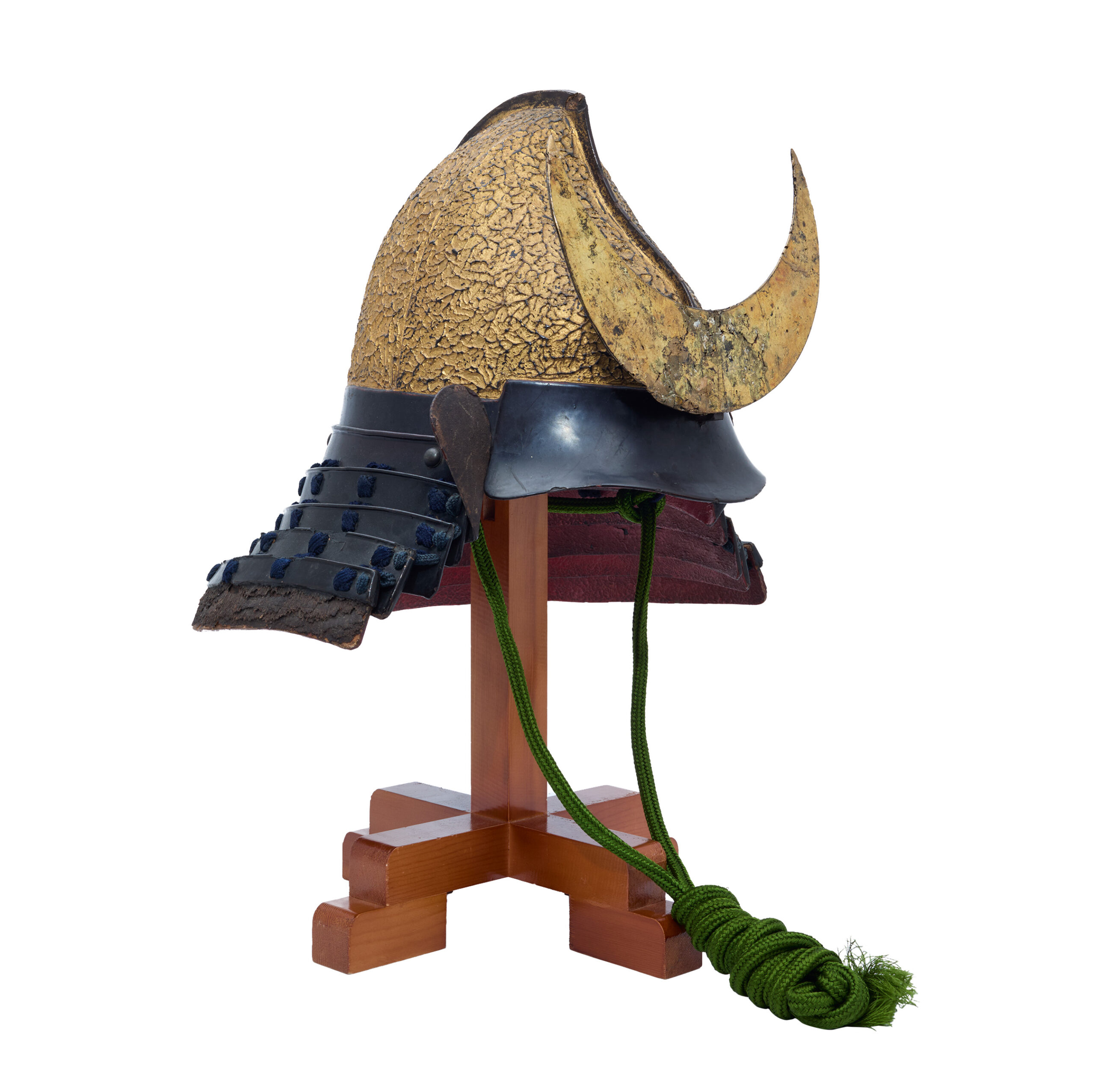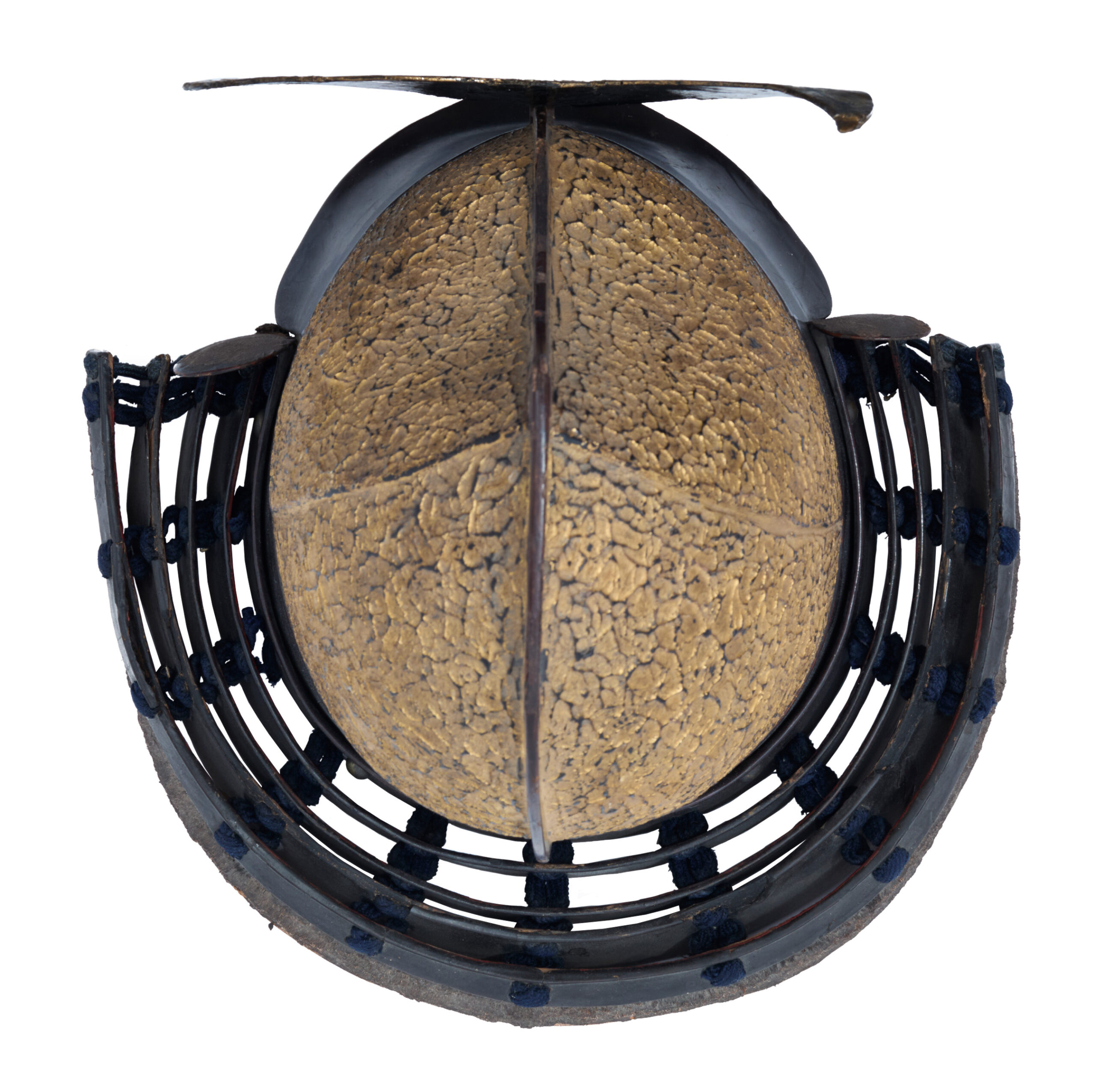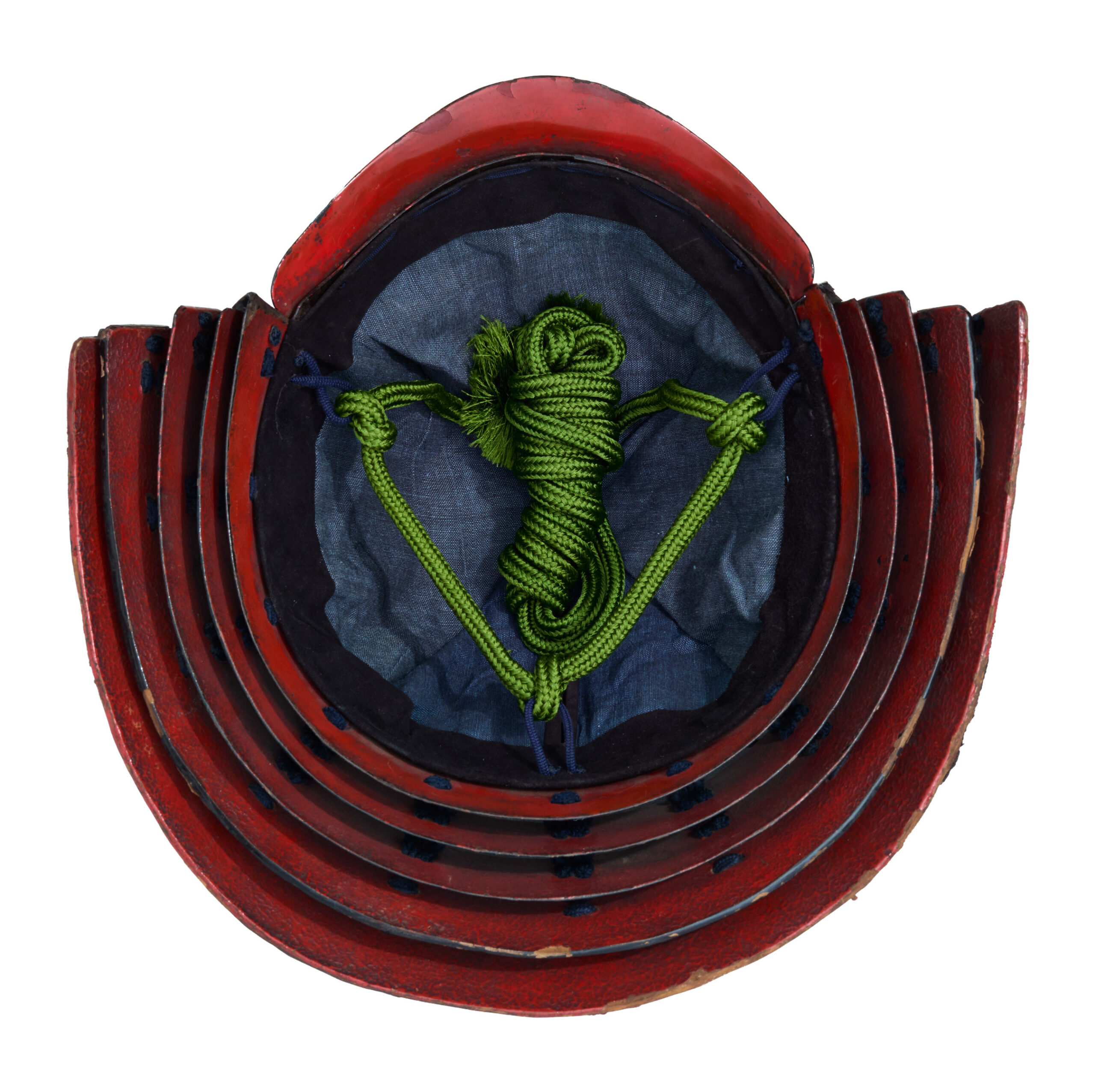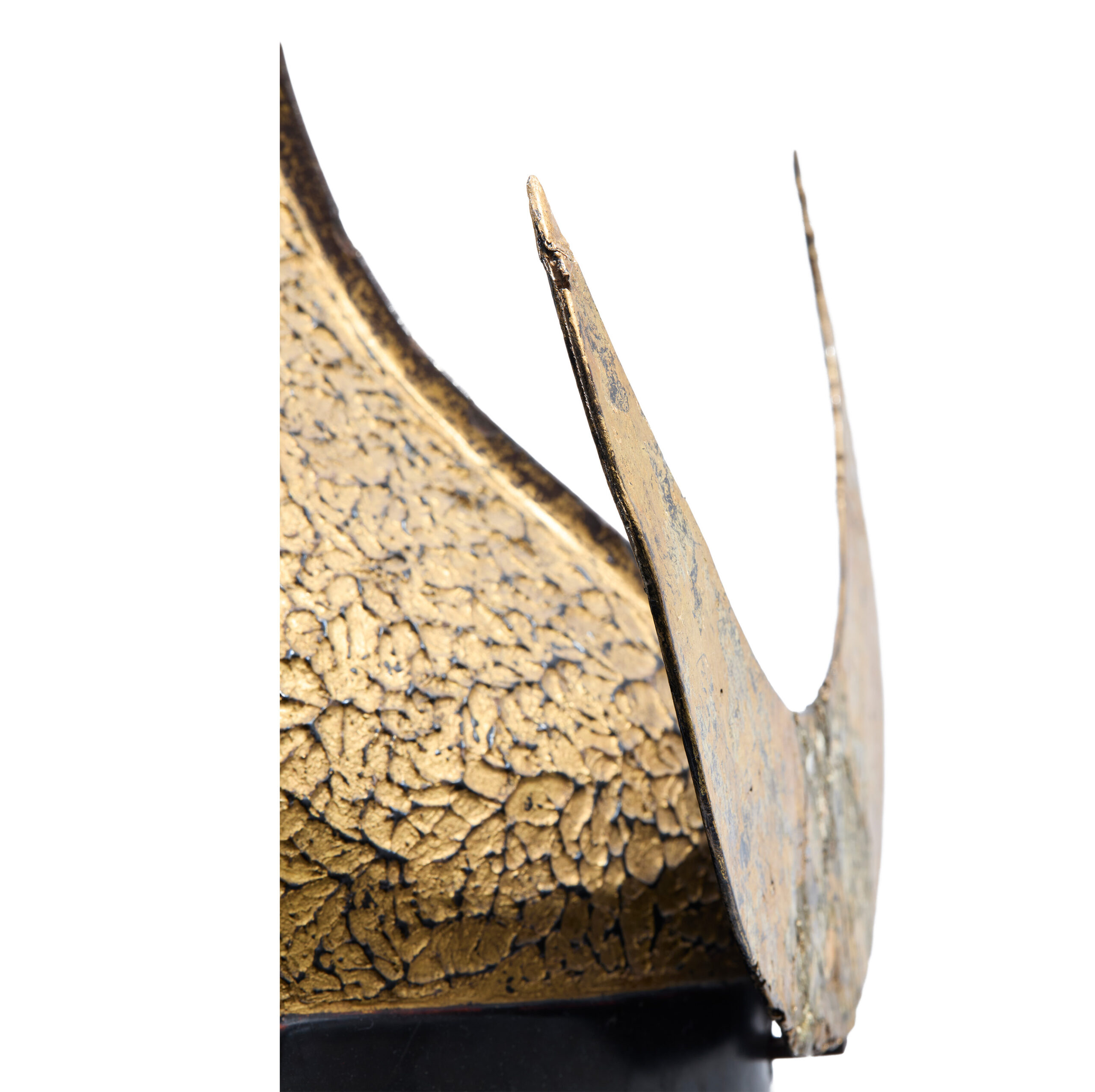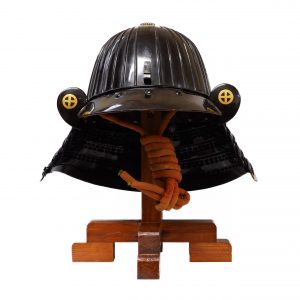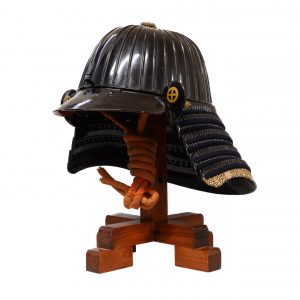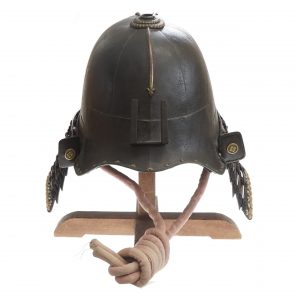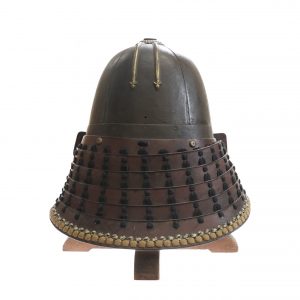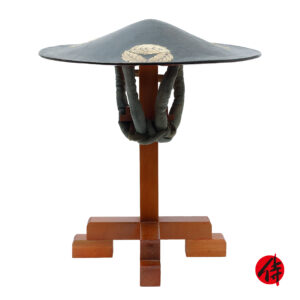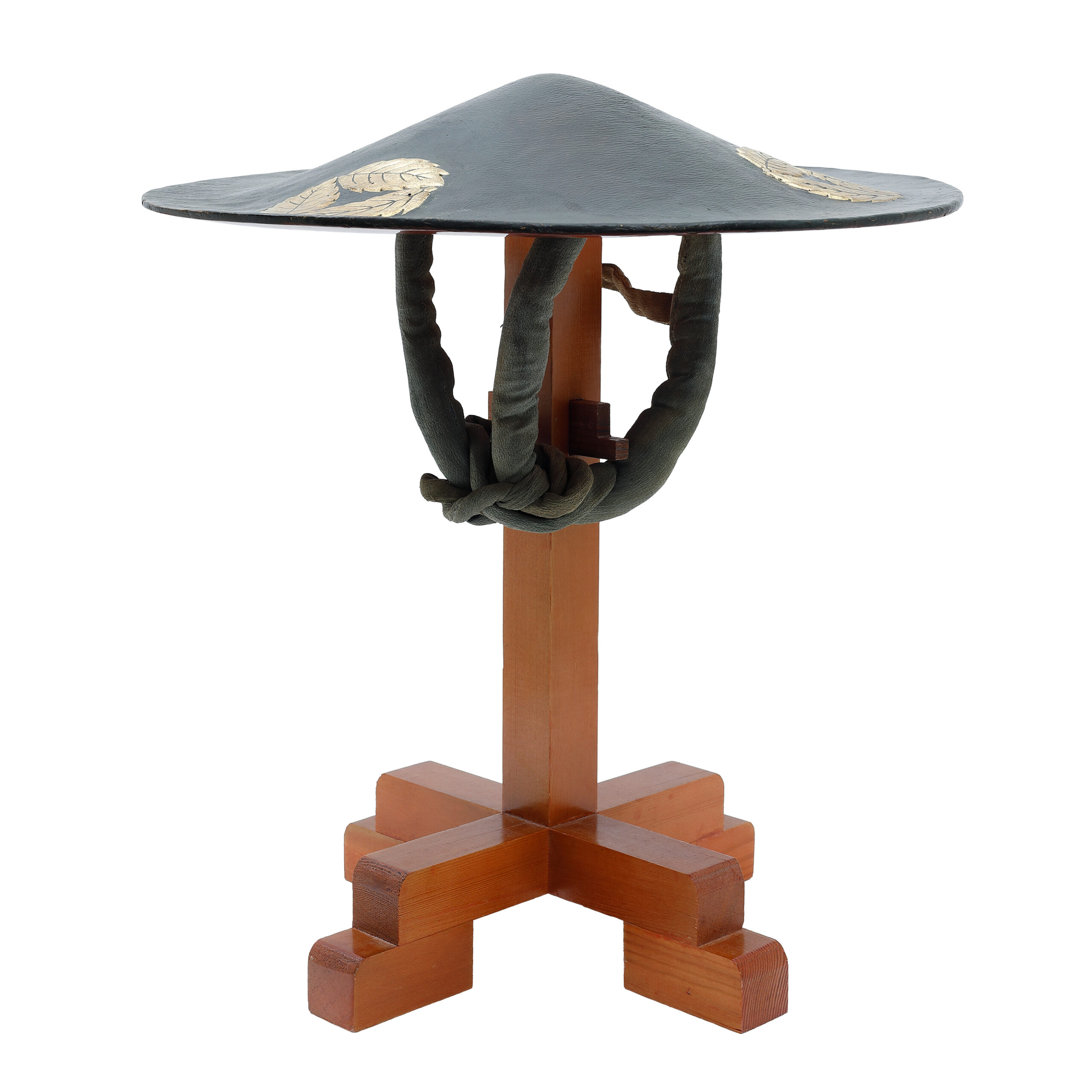Antique Samurai Helmet Mid Edo Period Tetsukin Tatakinuri Momo-nari Kabuto with Kicho Shiryo Certificate
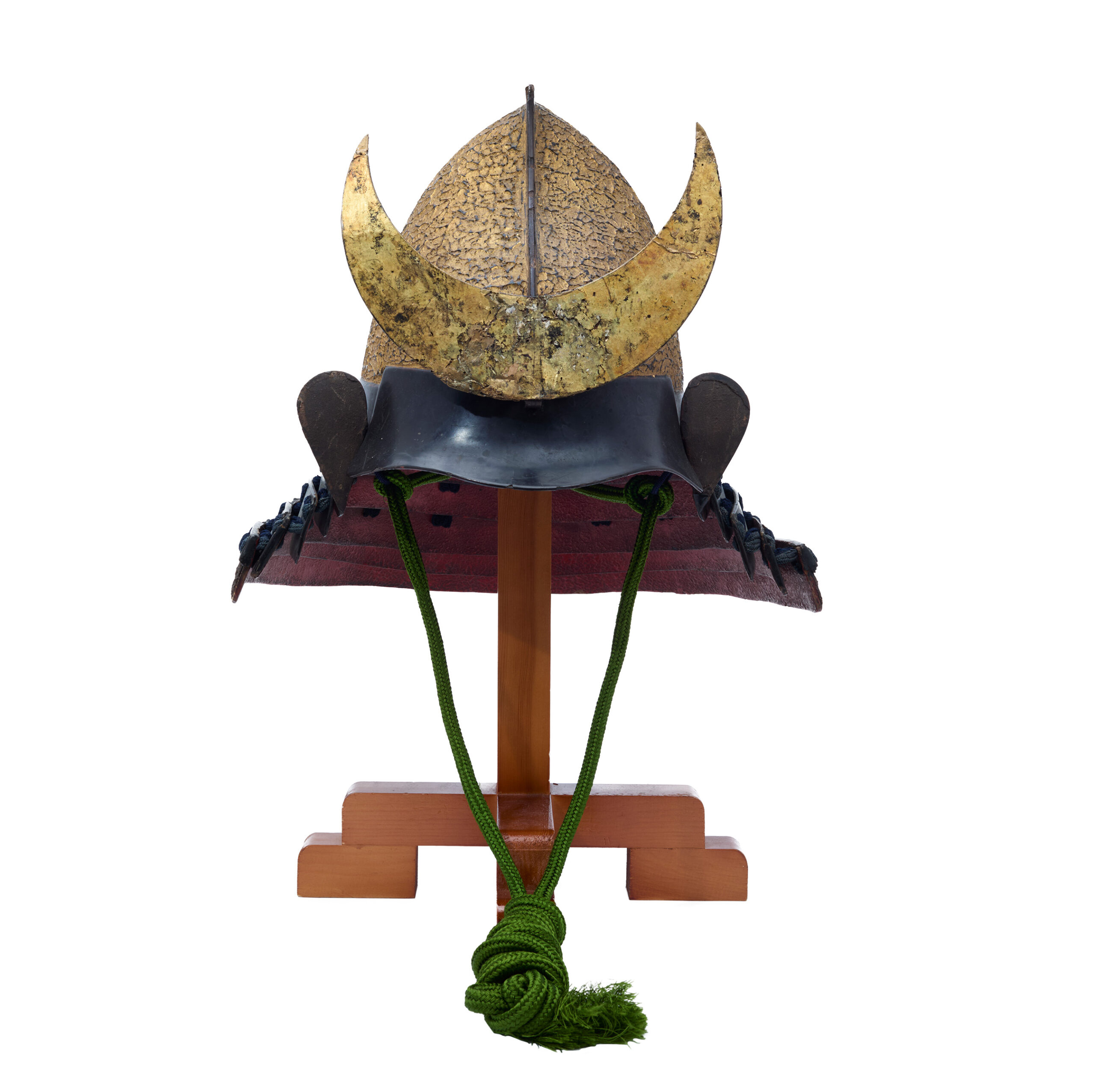
Period: Mid Edo Period (appraised by The Association for the Research and Preservation of Japanese Helmets and Armor)
Prime Material: Iron
The “Tetsukin Tatakinuri Momo-nari Kabuto” is a type of Japanese samurai helmet that combines practical design with artistic craftsmanship. The word “Momo-nari” means “peach shape,” and it refers to the round, smooth form of the helmet, which looks like the shape of a peach. This style became popular in the late 16th to early 17th century, during the end of the Sengoku period and the start of the Edo period. It was designed for good protection and comfort during battle, with a simpler shape compared to more decorative helmets.
The phrase “Tetsukin Tatakinuri” describes the material and finishing technique. “Tetsu” means iron, and “kin” refers to a small amount of brass or other metal mixed with the iron. “Tatakinuri” is a special method where the surface of the helmet is carefully hammered to create a textured pattern, and then coated with a thin layer of lacquer. This not only protects the metal but also makes the hammered pattern stand out visually. The result is a helmet that is strong, resistant to rust, and visually striking.
So, the “Tetsukin Tatakinuri Momo-nari Kabuto” is a practical helmet with a rounded design and a surface that shows off skilled metalwork. It represents a balance between battlefield function and artistic beauty, showing the high level of craftsmanship in traditional Japanese armor making.
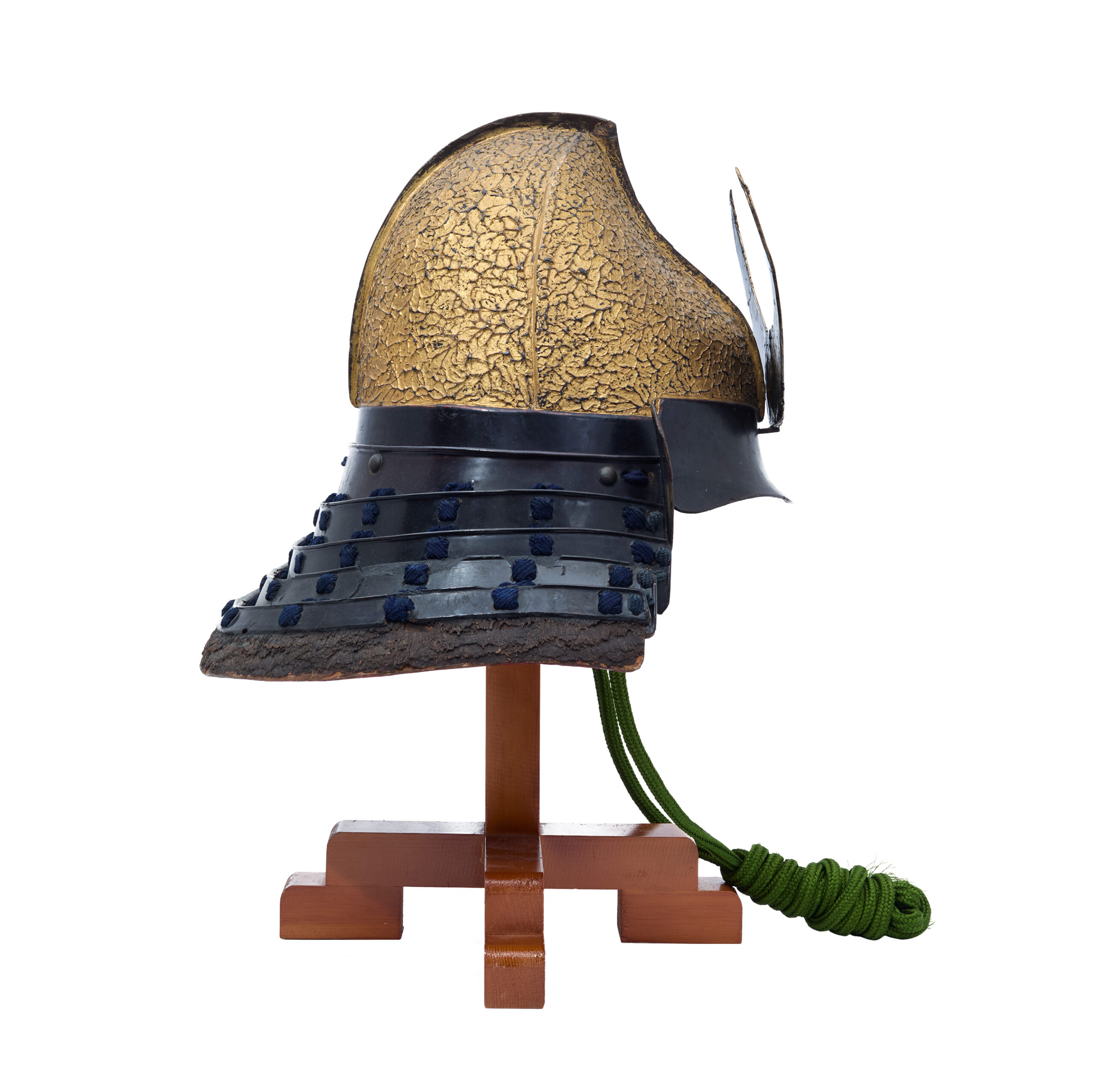



The Maedate (前立, front decoration) of this Kabuto is the crescent moon motif. It was a trendy design among Samurais due to a belief. According to a theory, the crescent moon design of the Maetate comes from the Myouken (妙見) belief. This religion was born in India. It was mixed with the Polestar belief and was brought to Japan from the Continent. In the Myouken belief, the moon and stars were the symbols of faith. The Myouken Bosatsu (妙見菩薩, 菩薩 means Bodhisattva) fulfills all wishes such as fertility of rich harvest, peace, the prosperity of the clan, healing of illness, longevity, success in business, traffic safety, academic achievement, marriage, etcetera. This theory tells us how the moon motif had a deep relationship with Samurai culture.
*Please keep in mind that this Maedate is made of paper mache and fragile and it is slightly tilted due to its age.

The Fukikaeshi is coated with black lacquer and features a distinctive upward-curving shape.
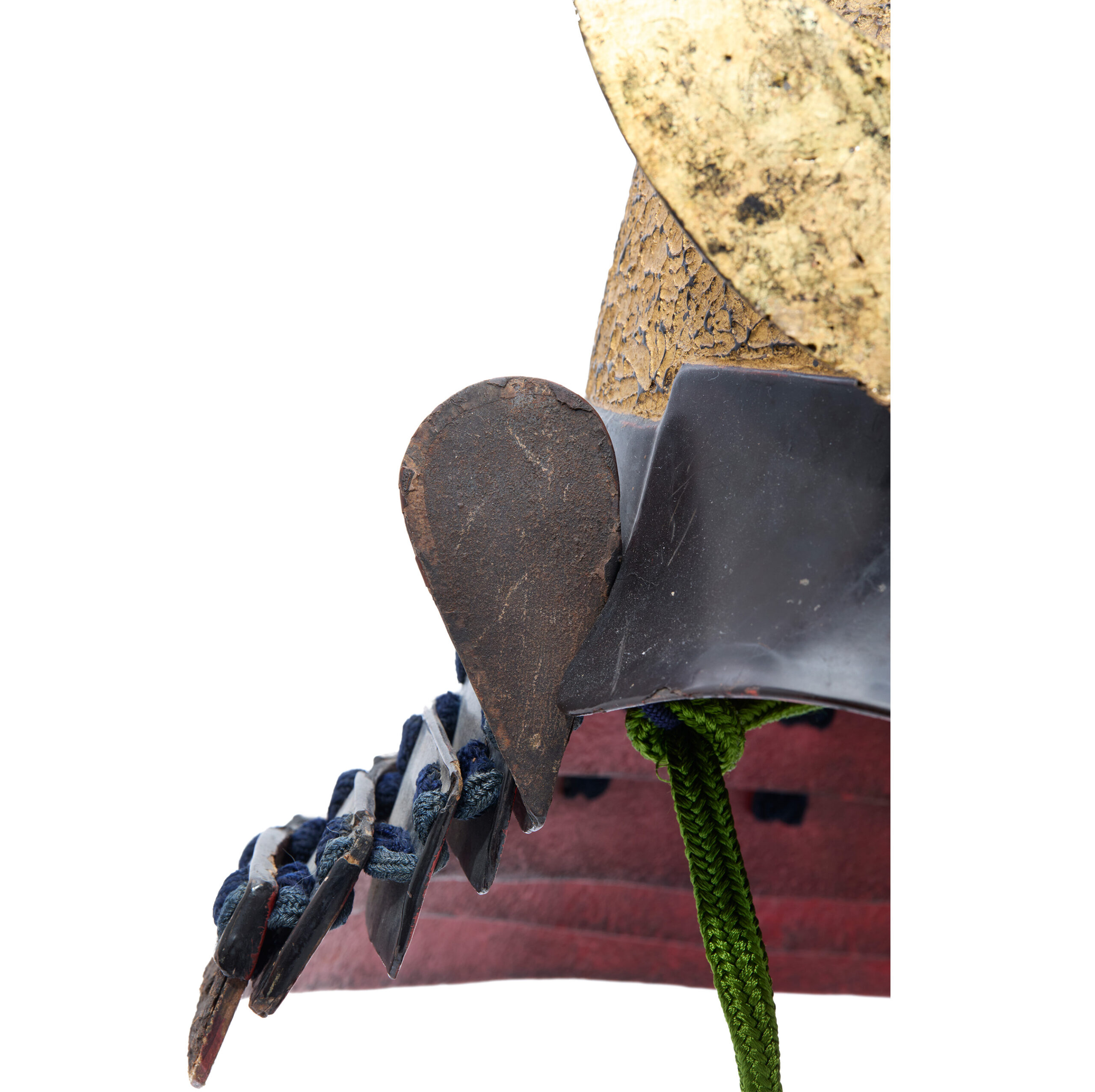
Certification:Kicho Shiryo Certificate
The certificate was issued by The Association for the Research and Preservation of Japanese Helmets and Armor, which is the most trusted Japanese armor appraiser in Japan. Tokubestu Kicho Shiryo means special rare article. It is ranked as the third highest of five rankings.
This helmet was authenticated on June 9th 2024 as a Kicho Shiryo and the paper mentions the helmet was made in the Mid Edo period. You can receive this original authentication paper.

An English translation of the certificate is available on request. We won’t charge any additional fee.
【About us】
Samurai Museum is located in Tokyo, Japan, exhibiting antique artifacts related to the Samurai history. Samurai Museum Shop is the place for those who are interested in Japanese culture and craftsmanship. We deal with antique Samurai swords/armor, traditional crafts made in Japan and so on.
【Antique Japanese helmet (Kabuto) and Export process】
After receiving the full payment from you, we will apply for its export permit from the Board of Education to legally export the helmet to other countries. It normally takes around 2-4 weeks to receive this permit. And we would like you to expect at least 1.0-1.5 months for your order to arrive at your given address after you ordered.
【Payment Method】
We accept payment through Stripe (Credit card), PayPal, Apple Pay or ChromePay, all of which are secure payment methods. Also, you don’t need to make an account on Stripe for the checkout. If you prefer other payment method, please contact us. After confirming your payment, we will apply for an export permit. You may either pay in JPY, USD, AUD, CAD, EUR, CHF or GBP. The price is set in Japanese Yen. Prices in other currencies are automatically calculated based on the latest exchange rate.

【Shipping Duration】
We ship via EMS (Japanese Postal Service). It normally takes at least 5-14 days to receive any packages after you place an order. It might take longer depending on the season or custom clearance. We will inform your order’s tracking number via email.
*Please keep in mind there is possible delay expected in delivery with EMS in some countries due to the pandemic in the world. We offer free shipping only when we can ship by EMS.
【How to make sure the condition】
Please keep in mind that what you are going to purchase is an antique item. We uploaded high resolution photos for you to check its condition thoroughly. If you like to see more photos with different angles, please feel free to contact us. We will be happy to send them to you so that you can make informed decision. It is essential for us to know that you are happy with your choice of a sword. and we are prepared to use the best of our ability to serve you.
【How To Contact Us】
Please contact us through email, Facebook Messenger or Live Chat if you have any questions. You can find each icon on the right side of the website. Please click one of them to reach us. We will reply to you within 1-2 business days.
【How To Preserve Antique Samurai Armor/Helmets】
Dryness, humidity, and bad ventilation might deteriorate the condition of antique Samurai armor/helmet. The best temperature to preserve Samurai armor/helmet is around 20℃ in Celsius, and humidity should be about 60%. Direct sunlight should be avoided. We recommend storing armors/helmets in a room with good ventilation. If you like to display them outside the boxes for a prolonged time, we suggest using a glass case in order for dust not to be accumulated easily. In case you don’t use a glass case, please make sure to regularly dust off from the armor/helmets by using a soft brush made of delicate cloth or brush for painting.
If you like to know more about the preservation of this armor, please feel free to contact us.

